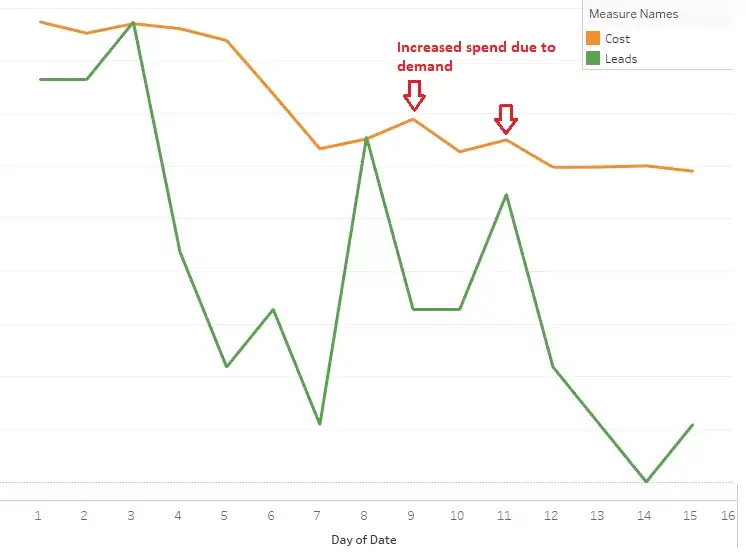Pinterest Performance+ Campaigns: A Complete Guide to Automated Pinterest Ads
Pinterest Performance+ campaigns represent the platform’s latest venture into automated advertising. This comprehensive guide will cover:
- How Performance+ compares to traditional Pinterest campaigns
- When to implement (or avoid) Performance+ campaigns
- Best practices and optimization strategies
- Real-world campaign performance benchmarks and case studies
The Evolution of Automated Campaigns
Digital advertising has undergone a significant transformation through automated campaign management over the past five years. Google led this revolution with Performance Max in 2019, followed by Meta’s Advantage+ in 2022. Now, Pinterest Ads enters the automation arena with Performance+ – but is it the right choice for your business?
Small businesses might find it a valuable time-saver for campaign management, while larger organizations could struggle with its limited control features. Before diving into Performance+, let’s explore the fundamentals of Pinterest Ads.
Understanding Pinterest Ads Targeting
Pinterest Ads can be targeted to two audience types: Interests & Keywords. For a complete list, Pinterest provides a handy chart.
1. Interest-Based Targeting
Example primary categories include:
Women’s Fashion
Art
Home Decor
These break down into subcategories like:
Women’s Fashion

Dress
Art

Contemporary Art
Home Decor

Furniture
Best Practice: Test niche interest segments first to gauge performance of broader segment.
2. Keyword Targeting
Available match types:
- Exact: [wedding dress] -> wedding dress
- Phrase: “wedding dress” -> blue wedding dresses
- Broad: wedding dress -> outfit for wedding
Best Practice: Implement keyword targeting within Consideration campaigns for efficient audience targeting.
Ad Placement Options
Search Placements
- Location: User search results
- Perfect for: Prospecting and direct response
- Key benefit: High visibility in results
- Average CPM: $3.50

Browse Placements
- Location: Home feed and “For You” recommendations
- Perfect for: Retargeting and reach extension
- Key benefit: Matches user browsing patterns
- Average CPM: $5.25

Best Practice: Maintain separate campaigns for browse and search placements for optimal performance.
Pinterest Performance+ Features Deep Dive
1. Performance+ Targeting
Key Features:
- AI-driven audience selection
- Limited exclusion capabilities (customer lists only)
Drawbacks
- Limited audience insights
- No control over placement targeting
- Over-reliance on retargeting (see Why Google’s Performance Max is Secretly A Retargeting Engine)
Performance Comparison:
- Traditional Campaign: $2.50 per new visitor
- Performance+ Campaign: $3.75 per new visitor
- Result: 50% higher acquisition costs due to automatic retargeting
2. Performance+ Bidding
Performance Bidding is not a new feature, but is now required in Performance+ campaigns.
Sample Budget Scenario ($100/day):
- Monday: $100 (baseline)
- Tuesday: $120 (+20% engagement spike)
- Wednesday: $80 (algorithmic adjustment)
The total spend will not exceed the daily budget over a specific period.
Real-World Example: Demand fluctuations cause spend to increase and decrease.

Currently Performance Campaigns is only able to optimize toward Pin Clicks, Outbound Clicks, Conversions, or Product Sales, though there are plans to expand this in the future.
3. Performance+ Creative Optimization
Benefits:
Automated format testing
Performance-based optimization
Limitations:
No format-specific spend control
Limited performance reporting by format
Best Practice: Create separate ad groups for each format to maintain visibility while testing.
When to Use Pinterest Performance+
Ideal Use Cases
- New Pinterest advertisers
- Small team operations
- Market testing initiatives
When to Skip
- Large-scale advertising operations
- Heavy retargeting requirements
- Prospecting-focused campaigns
Troubleshooting Common Problems
High Retargeting Frequency
Solution: Expand first-party exclusions
Action: Monitor frequency metrics
Creative Performance Issues
Solution: Run traditional campaigns in parallel
Action: Track format-specific metrics
Budget Management
Solution: Start with conservative budgets
Action: Allow full learning period (2 weeks)
Looking Ahead
Pinterest has shared some info on upcoming features including:
- Prospecting/retargeting controls
- Enhanced performance metrics
- Creative format control
Final Thoughts
While Performance+ shows promise, consider running it alongside traditional campaigns until more features are released. This hybrid approach allows you to leverage automation while maintaining essential control over your advertising strategy.
For full tutorials on how to leverage Pinterest Ads products, free courses are available at Pinterest Academy.
